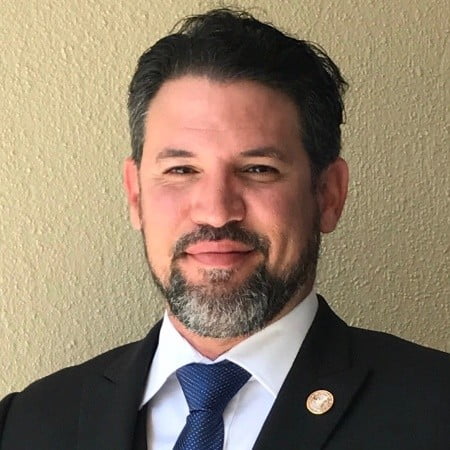

Conducting an intervention for a loved one addicted to methamphetamine (meth) is a critical step in helping them recognize the severity of their addiction and encouraging them to commit to treatment. Given the highly addictive nature of meth and its profound physical and psychological effects, an intervention must be carefully planned and executed with compassion, firmness, and support.
Understanding the Purpose of an Intervention
An intervention is a strategically planned process involving family, friends, and sometimes colleagues and a professional interventionist, all coming together to confront a person about their drug addiction and persuade them to seek treatment. The goal is to provide the individual with a structured opportunity to make changes before things get worse, and to show them the love and support available if they choose to accept help.
Preparation is Key
1. Educate Yourself and the Intervention Team: Before the intervention, all participants should be well-informed about meth addiction, including its dangers, symptoms, and potential treatments. Understanding the nature of addiction and the common challenges faced by those struggling with it can foster empathy and patience throughout the process.
2. Consult with a Professional: It’s often beneficial to involve a professional interventionist who can guide the planning process, moderate the intervention, and help manage intense emotions that may arise. Their expertise can be invaluable, particularly in anticipating and handling defensive or aggressive reactions from the addict.
3. Choose the Right Time and Place: Schedule the intervention at a time when your loved one is least likely to be under the influence of meth, such as early in the day. The location should be private and neutral, free from distractions and interruptions.
Conducting the Intervention
1. Express Concerns Without Judgement: Each participant should speak honestly about their concerns, focusing on specific incidents where the addiction has caused problems and expressing their feelings about these events. It’s crucial to avoid blame or judgmental language, as the goal is to encourage your loved one to accept help, not to shame them.
2. Offer a Prearranged Treatment Plan: Prior to the intervention, research and organize treatment options that suit the individual’s specific needs. During the intervention, present these options clearly. Explain what the treatment entails, how it can help, and the steps already taken to enroll them into a program (if applicable).
3. Set Boundaries and Consequences: If the individual refuses treatment, it’s important that all participants are prepared to set boundaries to protect themselves from the harmful effects of their loved one’s behavior. These consequences must be clearly communicated during the intervention and adhered to if the addict chooses not to seek help.
4. Show Unconditional Love and Support: Throughout the intervention, it’s important to reaffirm your love and commitment to supporting them through recovery. This support could be the key motivator for them seeking help.
After the Intervention
1. Be Ready to Act Immediately: If your loved one agrees to seek treatment, be prepared to act immediately. Delaying treatment can lead to a change of mind or a worsening of the addiction. Have logistical arrangements ready for entering a treatment facility, including packed bags, travel arrangements, and prior agreement from the treatment center.
2. Provide Continued Support: Whether the intervention results in treatment admission or not, continue to offer support. If they refuse help, maintain the boundaries you’ve set. If they accept help, be actively involved in their recovery process as appropriate, including participating in family therapy sessions, visiting, and providing encouragement.
3. Manage Expectations: Recovery is a long and challenging process with potential setbacks. Managing your expectations about recovery and being patient with the process are vital.
Frequently Asked Questions
Q: How do I know if it’s the right time to stage an intervention?
A: Timing is crucial for the effectiveness of an intervention. Ideally, an intervention should be conducted when the addict is sober and there is minimal chance of outside interruptions. Avoid times when they are under extreme stress. Early intervention is often more effective, so it’s beneficial to act as soon as signs of addiction become apparent and problematic behaviors escalate.
Q: Who should be involved in the intervention?
A: The intervention should include close family members, friends, and possibly colleagues who are directly affected by the individual’s meth use and who are genuinely concerned about their wellbeing. It’s important to keep the group small and manageable to avoid overwhelming the individual. Involving a professional interventionist can also be extremely beneficial, as they can provide guidance and manage the dynamics of the meeting.
Q: What should I say during the intervention?
A: Participants should prepare what they intend to say in advance. It’s effective to use specific examples of destructive behaviors and their impacts on the addict and their loved ones. Communicate using “I” statements, such as “I feel worried when I see you hurting yourself” to keep the discourse non-confrontational. It’s crucial to express care and the desire for the individual to seek help rather than making accusatory statements.
Q: What if my loved one reacts negatively?
A: Negative reactions, such as denial, anger, or sadness, are common during interventions. It’s important to remain calm, composed, and empathetic. The presence of a professional interventionist can help navigate high emotions and keep the session on track. Remember, the goal is not to coerce the individual but to express concern and offer help.
Q: What should we do if the intervention is successful and they agree to treatment?
A: If the individual agrees to treatment, it’s critical to have a plan ready to implement immediately. Delay can lead to a change of heart or a relapse into drug use. Ensure that arrangements for treatment are set up in advance, including travel to the facility. Stay supportive and involved in their recovery process, reinforcing how proud you are of their courage to seek help and change their life.
Source
- National Institutes of Health – Evaluation of the BEAT Meth Intervention
- WebMD – Crystal Meth: Signs of Use and Addiction
- Hazelden Betty Ford – Methamphetamine (Meth) Addiction
- Drug Misuse and Addiction – National Institute on Drug Abuse







